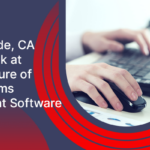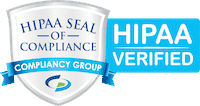Riverside, CA: A Look at the Future of Claims Management Software in 2024
July 25, 2024
Benefits administration, claims processing, and compliance monitoring are just a few of the administrative duties that third-party administrators (TPAs) do daily for businesses. To optimize these procedures and boost productivity, several TPAs depend on customized software created especially to meet their requirements. This post will examine TPA software features and how they help administrators do their obligations more efficiently.
1. Claims Management
Claims management is one of the primary purposes of TPA software. Administrators can quickly review and decide on member or customer claims due to this tool.
Essential elements of the claims process consist of:
Automated Adjudication
By automating the claims adjudication process, TPA software saves processing time and manual error. The program establishes eligibility for claims, coverage, and payment amounts using established rules and algorithms.
Integration with Payers
TPA software interfaces with insurance companies and other payers to expedite the sharing of claim data. By ensuring prompt claim filing and processing, this connection enhances cash flow and boosts customer satisfaction.
Monitoring and Documenting Claims
In addition to creating thorough reports for analysis, administrators can monitor the status of claims in real-time. Proactively managing the backlog of claims, identifying patterns, and streamlining operations are made possible by this visibility.
2. Benefit Administration
Features for administering employee benefits, including flexible spending accounts, retirement plans, and health insurance, are included in TPA software.
These features give admins the resources they need to:
Enrollment and Eligibility Management
TPA software handles changes to benefit coverage and makes it easier for new hires to enroll. Administrators can enforce plan restrictions, monitor enrollment progress, and confirm member eligibility.
Plan Configuration
Benefit plans, including eligibility conditions, contribution amounts, and coverage options, can be tailored by administrators to meet the needs of their clients. Flexible plan configuration is made possible by TPA software to meet a range of purposes.
Employee Self-Service
A few TPA software packages let workers access and manage their benefits online through self-service portals. This lessens the administrative load and gives employees the power to choose their coverage wisely.
3. Provider Network Management
Administrators may negotiate contracts with healthcare providers and maintain provider networks with the use of TPA software.
Important aspects of managing the provider network comprise:
Provider List
TPA software keeps an extensive list of medical professionals, including doctors, hospitals, and specialists. Based on factors like specialty, connection with a network, and geography, administrators may search and filter providers.
Contract Management
Negotiation, renewal, and compliance monitoring are all aspects of managing provider contracts that administrators can handle. TPA software monitors contract conditions, reimbursement rates, and performance measures to guarantee compliance with client goals.
Credentialing and Compliance
TPA software keeps track of continuous adherence to regulatory standards and automates the credentialing procedure for new providers. Administrators can keep track of expirations, validate provider credentials, and quickly resolve any compliance problems.
4. Utilization Review and Case Management
TPA software has tools for handling complicated medical issues and doing utilization reviews. Administrators may maximize healthcare consumption and save expenses with the help of these features:
Utilization Review
TPA software analyzes medical claims data to find anomalies and possible overutilization, automating the utilization review process. Administrators can evaluate situations that have been marked for examination, determine whether medical assistance is necessary, and make recommendations.
Case Management
TPA software makes it easier to handle complicated medical cases, such as those with severe injuries or long-term diseases. Case managers may be assigned, care plans can be coordinated, and administrators can monitor treatment objectives.
Tracking results
Administrators may keep tabs on the success of treatments and track results with the use of TPA software. Administrators may show customers and stakeholders the benefits of case management initiatives by gathering data on patient results, satisfaction levels, and cost reductions.
5. Reporting and Analytics
With the powerful reporting and analytics features of TPA software, administrators may learn more about their operations and performance indicators:
Standardized Reports
TPA software provides pre-made reports that include financial analysis, claims metrics, financial performance indicators (KPIs), and compliance tracking. Standard reports can be created by administrators on demand or scheduled for automated delivery.
Personalized Dashboards
With TPA software, administrators may design personalized dashboards that feature interactive graphs, charts, and visualizations. These dashboards facilitate data-driven decision-making by offering quick insights into meaningful metrics and trends.
Ad Hoc Analysis
Ad hoc analysis and data exploration are supported by TPA software, which enables administrators to query extensive databases and find hidden patterns or abnormalities. Administrators can perform root cause analysis, go into specific data points, and spot areas that might require improvement.
Conclusion
The extensive feature set of TPA software is intended to increase customer happiness, increase efficiency, and streamline administrative procedures. Administrators may efficiently manage claims, benefits, provider networks, use, and cases by utilizing automation, integration, and analytics. TPA software will become more and more necessary as the healthcare industry develops as a tool for administrators to manage difficult situations and provide value to their members and clients.
7 Features Every Online Claim Management System Needs
June 27, 2024What to Look for in Claims Management Software?
May 8, 2024









